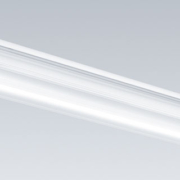The importance of lighting controls solutions tailored for education applications
Important legislative changes have impacted on the use of lighting control systems within the education sector. Contractors must now provide controls which deliver greater energy savings in line with increasingly stringent regulations around sustainability. Additionally, these must be designed to meet each institution’s precise operational requirements, making decision-making around lighting and controls more complex.
Meanwhile, lighting controls have become significantly more sophisticated in functionality and quality. This allows specifiers and installers to select the most appropriate products for each customer, with expectation from end users around lighting controls increasing considerably.
There is now greater emphasis within BREEAM on consultation to truly understand client needs. Similarly, the implementation of BIM requirements means specifiers, armed with this in-depth understanding, must select fully compliant products.
A valuable lesson
As in any sector, it makes sense to select a lighting controls partner with significant experience in educational projects. Where schools and educational facilities differ from commercial spaces or offices is that the primary objective is to create an environment optimal for learning.
Budgetary constraints in the education sector cover both initial cost of purchase and delivering ongoing reduction in energy usage.
For instance, occupancy-sensing controls ensure lighting is used only when required, creating a well-lit classroom suited to effective learning while minimising unnecessary energy consumption and cost.
The best of both worlds
Typically, there will be three or four banks of lighting in a classroom – one close to windows, with another at the front where the whiteboard is. A lighting control system adjusts lighting accordingly to account for varying levels of artificial and natural light.
Typically, this means the lights nearest to the windows will be dimmable, and on a sunny day may dim down to as low as 25% of full output. Further into the space, depending how far the daylight penetrates, other rows may dim down to, say, 75% – or even remain at 100% output.
With widespread use of interactive whiteboards and projectors, dimmer switches help focus students’ attention as these can be used to dim light elsewhere within the teaching space.
Many classrooms, particularly in secondary schools, are used by numerous teaching staff and support staff outside teaching hours. This means the control interface must be easy to use by individuals unfamiliar with that classroom and with varying degrees of technical competence.
Versatility
Classrooms are often also used for extra-curricular and community-based activities. To optimise energy use, it makes sense to implement flexible systems which can cater for this. The absence of such measures can lead to wasteful energy consumption and increased cost, as lights are left on when only a few classrooms, connecting corridors and stairways are in use.
Similarly, rooms in universities and colleges are occupied sporadically, highlighting the need for automated systems ensuring lights are kept on only when in use. Selecting the right occupancy detection can deliver significant savings. In a classroom, for instance, a single microwave detector may offer the same control as two or more PIR detectors, reducing capital costs and cabling requirements.
The same applies to corridors, where the directional qualities of occupancy detectors can provide maximum coverage with the minimum number of sensors.
Conclusion
Lighting controls are continually evolving to meet the precise needs of the education sector. Correctly chosen solutions can help create the optimal learning environment. Seeking advice from those with specialist knowledge and experience in these crucial areas can help ensure clients receive the best solution.
The new Vitesse Plus, a seven-channel lighting control system by CP Electronics, has been specially designed with BIM and EFA guidelines in mind, as well as a growing need to find a cost-effective solution which is easy to set up. Features such as graduated dimming and corridor hold are simple to set up and control, with photocell detectors making adjustments that take advantage of natural light levels.














Leave a Reply
Want to join the discussion?Feel free to contribute!